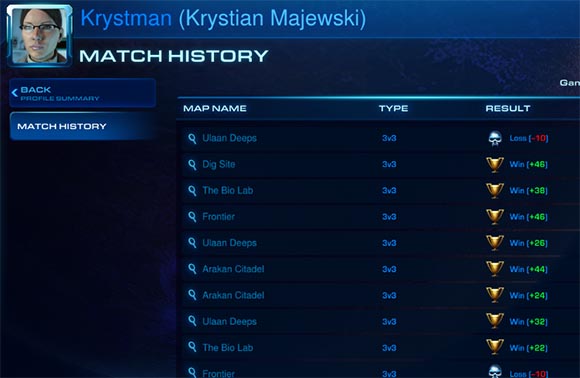You might have noticed that I didn’t post yesterday (If you didn’t: forget I said anything). That’s because I went to meet up with two friends to finally play some StarCraft II again. We started at 5pm and – SHOOOOOOOOOM – the world just went away. If I didn’t have a job we would be playing still. The fascination, the trill of playing this game on-line with friends is simply undeniable. The mind-blowing thing is that this is just one of many faces of enjoying StarCraft II.
On an obvious level, there is the single-player mode and that’s just extremely well-made. Yes, it has a shallow story and it suffers from some forgettable writing. On the other hand, the mission design and the campaign structure create one of the most diverse, polished and engrossing single-player experiences I have witnessed in a long time now. It sets the standards on how to make games and can easily satisfy alone.
But it’s not alone. There is multi-player as well. And I just now realized that multi-player offers dozens of very different styles of play as well. You see, at first sight it might look like there is not much difference between 1vs1 and 3vs3 – it’s the same thing with just more players. Oh, but there is, there is.
When you hear people talking about competitive-level StarCraft multi-player, they often refer to 1vs1. It’s two players dueling each other. It’s an entire universe of intricate strategies and counter-strategies, mind-games and insane control skills. Once you get on-line and dive into this world the challenges you encounter are those of human cognitive capabilities. The game asks you to remember and execute to do 50 things all at the same time. Surprisingly, won’t be your hands that will hold your back, it will be your mind. The game will also challenge your emotional stability. Can you keep this peak performance even when the fear and then the disappointment of defeat is stifling your every thought?
1vs1 is an intense, hardcore experience so it’s no wonder it’s not for everybody. A lot players opt to play exclusively 2vs2, 3vs3 or 4vs4 – teaming up with friends to battle against teams of strangers. And that’s fine too. But it’s mind-blowing how different that game becomes as a result. In 3vs3 the counter-strategies and mind-games play a less important role. With 3 players executing their own strategy, it’s simply impossible to create a perfect response to everything. Even early scouting – a crucial technique in 1vs1 – becomes less relevant. It takes too much time and doesn’t deliver clear answers. What you need instead is flexibility and good communication with you team mates. You need to be able to modulate your strategy so it’s in-tune with the timing of your teammates. You need to also be able to drop everything you do to help out a teammate at any time. The reward is an emotional amplification. Every defeat is so much more devastating. But every win is an epic victory to be celebrated, remembered and re-told.

In 3vs3, the “Match History” goes beyond history. It becomes Legend.
And that’s just the tip of the eisberg. I haven’t played too many 2vs2 and 4vs4 games yet, there might be subtle nuances. Also, I heard that the game changes significantly in higher leagues. And then there is Free-For-All. And then there are custom games. And then there is comp-stomping. Each mode makes small adjustments to the same potent formula that result in fundamentally different, fresh and exciting experiences. I just wished I had a year or two to explore and enjoy that wealth. But what’s becoming clear now is that StarCraft II is here to stay, so there is no need to rush (yes, of course pun intended). We can take things at our pace. We have scheduled regular 3vs3 meetings now.





